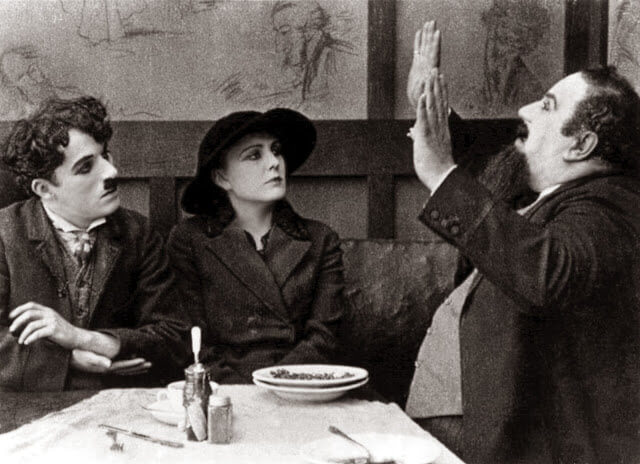Released in 1917, Chaplin's Little Tramp character was only three years old and, when viewed side-by-side next to Kid Auto Races at Venice, the progress made (in terms of elegance, humour and technical accomplishment) is remarkable. This can almost entirely be attributed to Chaplin who, no longer a gun for hire, become the architect of his own movies - writing, directing and starring in them.
In taking control of his own career, not only was Chaplin able to make himself the biggest star in the movies, he was able to shape the romantic tone which has provided the back bone of Hollywood cinema ever since.
Here Chaplin stars as the titular immigrant, arriving in America with nothing to his name but the clothes on his back and the dreams in his heart. On his voyage across the Atlantic Ocean, Chaplin bashfully befriends a young woman (Edna Purivance) - it is clear he is smitten. A wistful and tender relationship between the two develops as Chaplin attempts to impress and woo the young woman with a meal he knows he can't afford but has neither the pride, or courage, to admit to.
A sentimental, romantic fool Chaplin infuses his romantic story-line with the slapstick vaudeville with which he made his name and fortune. Here he displays, for perhaps the first time, the perfect synergy of melodrama and comedy synonymous with his name and which set the tone of American cinema immutably.
An impossibly lovely film, there is, however, one dark post-script that must be added upon discussing The Immigrant. That footage from this film, in which Chaplin's character kicks an immigration officer, was used as evidence of his anti-Americanism in the case which eventually lead to the great actor's exile from the USA should be considered one of the ugliest shames the States has ever granted itself.


No comments
Post a Comment